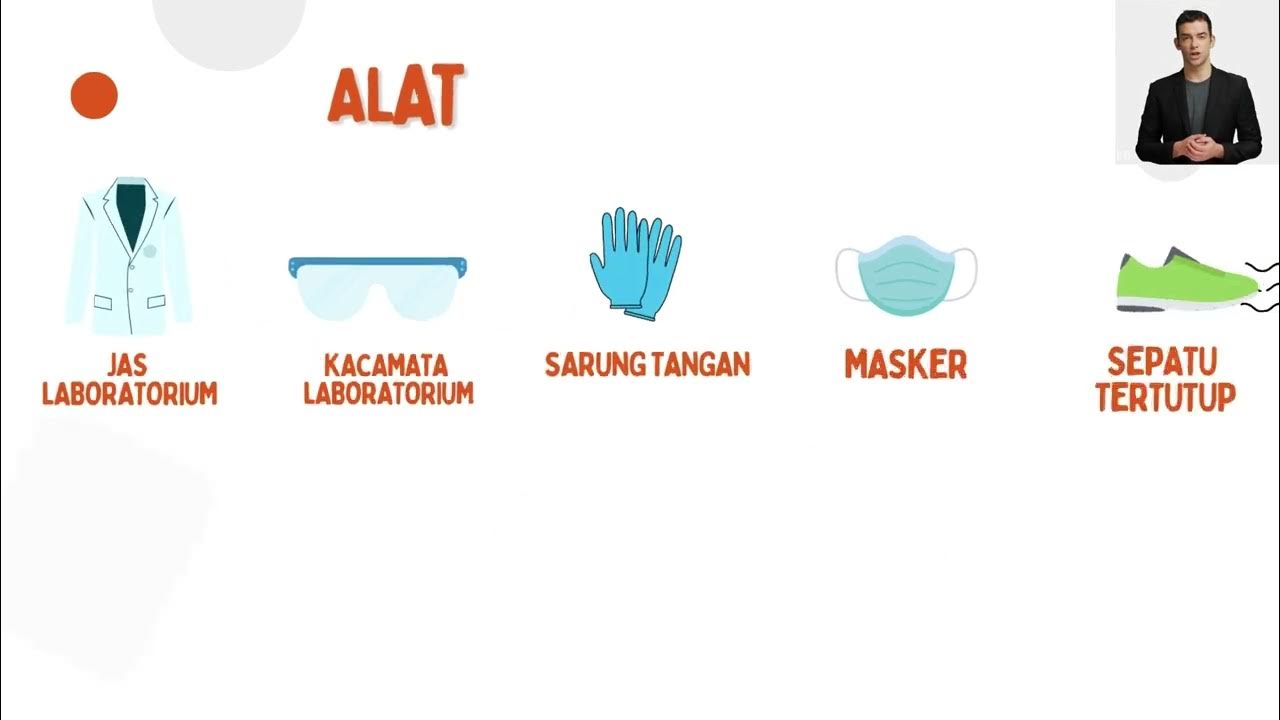Segurança em Laboratório - Aula 01 #quimicaexperimental
Summary
TLDRThis video covers essential laboratory safety guidelines for students, focusing on three key moments: before entering, during, and after a lab session. It highlights the importance of proper attire, such as closed shoes, long sleeves, and hair tied back, as well as the use of safety equipment like lab coats, gloves, and goggles. It also emphasizes the need for preparation, caution with chemicals, and the correct handling of lab materials. The video stresses the importance of teamwork, staying calm during accidents, and cleaning up after the lab session to ensure a safe environment for everyone.
Takeaways
- 😀 Always arrive on time and in a calm state of mind before entering the laboratory to ensure focus and safety.
- 😀 Avoid wearing inappropriate clothing such as shorts, skirts, sandals, or sleeveless lab coats. Wear proper safety attire including long pants, closed-toe shoes, and protective equipment.
- 😀 If you have long hair, tie it up to prevent it from falling into chemicals or catching fire during experiments.
- 😀 Always use personal protective equipment (PPE) such as lab coats, gloves, safety goggles, and closed shoes to minimize exposure to harmful chemicals.
- 😀 Never eat, drink, or sleep in the laboratory, as this could expose you to harmful fumes or contaminants.
- 😀 Work with a partner or group in the lab. Never work alone in case of emergencies or accidents.
- 😀 Familiarize yourself with the proper way to smell chemicals by cupping your hand over the container and gently wafting the fumes toward your nose, never inhaling directly.
- 😀 Always wash your hands after handling chemicals and before eating or drinking. Keep your work area clean and organized to avoid accidents.
- 😀 In case of an emergency, stay calm, immediately notify your instructor, and follow safety procedures to manage the situation effectively.
- 😀 After the lab session, clean and store equipment properly, ensure all chemicals are disposed of correctly, and complete the lab report with all observations and conclusions.
Q & A
Why is it important to arrive on time for a laboratory class?
-Arriving on time helps ensure that you are mentally prepared for the session and avoid rushing, which can lead to accidents. It also allows you to review the procedure and safety protocols beforehand.
What types of clothing should be avoided when entering a laboratory?
-Avoid wearing shorts, skirts, sandals, sleeveless lab coats, contact lenses, or hats like caps or bonnets. These can expose you to increased risks of accidents or chemical exposure.
What personal protective equipment (PPE) is required in a laboratory?
-Essential PPE includes a lab coat, closed shoes, long pants, goggles, and disposable gloves. These protect you from chemical exposure and potential hazards.
Why should laboratory coats be made of cotton instead of polyester?
-Cotton lab coats are safer as they absorb chemicals without causing further damage to your skin, whereas polyester may react with chemicals and cause burns or adhesion to the skin.
How should you handle your hair when working in the laboratory?
-If you have medium or long hair, it should be tied back securely to prevent it from coming into contact with chemicals or catching fire in the laboratory.
What should you do if you feel ill or experience an allergic reaction in the laboratory?
-If you feel unwell or experience an allergic reaction, immediately inform the teacher and leave the laboratory, preferably accompanied, for observation and medical attention if needed.
What is the proper way to smell chemicals in the laboratory?
-To smell chemicals safely, use your hand to gently waft the fumes toward your nose. Never directly inhale from a container, as this can be hazardous to your health.
Why is it important not to eat, drink, or sleep in the laboratory?
-Eating, drinking, or sleeping in the lab can lead to accidental ingestion of chemicals, exposure to toxic gases, or contamination of food, which poses significant health risks.
What should you do with leftover reagents after an experiment?
-Leftover reagents should never be returned to their original containers. Instead, consult the teacher or laboratory technician for proper disposal procedures to avoid contamination or chemical reactions.
What actions should be taken if an accident occurs in the laboratory?
-In case of an accident, remain calm, alert the teacher immediately, and evacuate if necessary. Do not panic or create unnecessary chaos, as it could worsen the situation.
Outlines

This section is available to paid users only. Please upgrade to access this part.
Upgrade NowMindmap

This section is available to paid users only. Please upgrade to access this part.
Upgrade NowKeywords

This section is available to paid users only. Please upgrade to access this part.
Upgrade NowHighlights

This section is available to paid users only. Please upgrade to access this part.
Upgrade NowTranscripts

This section is available to paid users only. Please upgrade to access this part.
Upgrade Now5.0 / 5 (0 votes)





